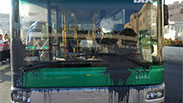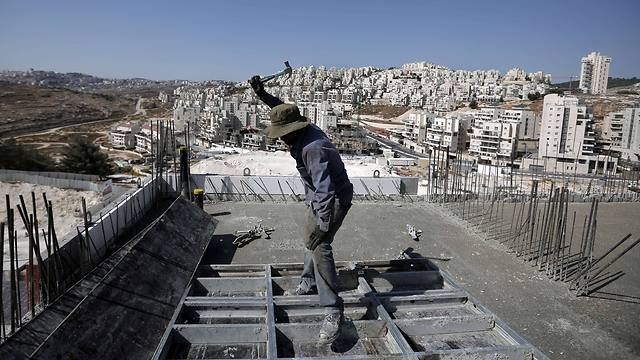
Jerusalem, where economics triumph over violence
Despite incidents of violence in Jerusalem, demonstrations and escalating tension, the economy is bringing a semblance of normalcy to the lives of Jews and Arabs in Jerusalem.
Dozens of Arab bus drivers have stopped working due to harassment and Arab taxi drivers are afraid to pick up passengers in the western city, and yet the overall picture is not one of disruption, but rather of a citywide transport network that is held together by thousands of Arab workers.
Aside from the hundreds of public transport drivers, the capital's various truck companies hire the greatest number of Arab drivers, and they are joined by thousands of workers in garages, gas stations and vehicle testing spots. Some are Israeli citizens, like the residents of Abu Ghosh and Beit Safafa, but most, those from the East Jerusalem neighborhoods, are not Israeli nationals but permanent residents with a blue identity card.
Freedom of movement
And it's not just in the transport sector. Arab workers are employed in every area in Jerusalem, in particular in manual labor, factories, hospitals, and hotels. This is primarily caused by the separation fence, which cut off East Jerusalem from the West Bank and the employment opportunities there. This separation led to a dramatic shift in the social structure of Jerusalem's Arab population.
Most of the elite and the professionals left, in particular for Ramallah, where they work as senior Palestinian Authority officials, clerks and managers in the Palestinian banks, company executives, high-tech workers, engineers, lawyers and academics. They are not involved in the Israeli labor market; all are employed in the Arab market.
The more disadvantaged remained in East Jerusalem, where they have the advantage of freedom of movement in the west of the capital and the rest of Israel. There are tens of thousands of construction workers and cleaning staff in hospitals, universities and businesses who prefer to live within the city limits so as not to have to endure the checkpoints on a daily basis. They live in the poor neighborhoods of East Jerusalem, and some even run successful contractor and trucking businesses.
Codependency
The Arabs of Jerusalem, totaling some 350 thousand people, account for about 40 percent of the city's population. They have a higher income than the Arabs of the West Bank, but the cost of living is also higher in Jerusalem - especially housing prices, which are sometimes four times higher than in the West Bank.
The Jews and Arabs in Jerusalem are codependent. Where one can separate Israel from Gaza and the West Bank with fences and barriers, in Jerusalem this is impossible, with the Jewish and Arab neighborhoods so intertwined.
So one may assume that economic rules will prevail over politics in Jerusalem, over incitement and over fear. There is no one to replace the tens of thousands of Arabs who work in the capital; not immigrants, not haredim and not the few middle class left in the Rehavia neighborhood.
The waves of violence in the city subside fairly quickly, and the defense establishment is making great efforts, and on the bottom line - the Jerusalem economy is stronger than everything else.











